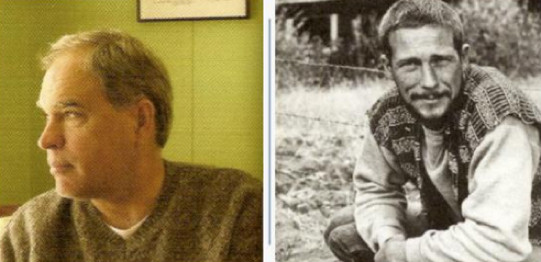On Gary Snyder, 'Myths & Texts'

Published in 1960 by Totem Press, Gary Snyder’s Myths & Texts (completed in 1956) gives the first indication that his career would be devoted to the long poem as well as the short poem. Anthologized as the author of lyrics like “Nooksack Valley,” “The Bath,” and “True Night,” Snyder also worked away for forty years on the 152-page long Mountains and Rivers Without End (Counterpoint, 1996). Myths & Texts initiates Snyder’s struggle with the great modernists, many of whom attempted poems of length as well, and each of whom also discovered, like Snyder, that beyond a hundred or so lines, anything calling itself a “poem” would usually prove to be a work of interconnected sections. The form of such a poem gestures less toward a completed unity than the possibility of endlessness (a friend once commented that Mountains and Rivers really was “endless”), of infinite, spiraling speculation and freeplay.
Dividing the poem into three parts — “Logging,” “Hunting,” “Burning” — Snyder then subdivides those parts into numbered sections averaging a page in length. By beginning with the activity of logging, he means to emphasize the human will to harvest the riches of the vegetable world, a process as common to ancient China as to the forests of his native Northwest. It is not a process from which he stands apart: Snyder’s typical stance is one of complicity, not judgment and distance, and he too cuts down trees in order to make a living. Everything goes, leaves, disappears — is in some way used. Besides, the kids may “grow up an go to college” and not “come back,” but the “little fir-trees do.” [1]
Similarly, in “Hunting,” Snyder begins by saying “a man’s got to eat.” [2] In order to justify or simply to live with the killing involved, cultures have invented stories asserting a continuity between the human and the animal world, between “man and beast.” And so we get the myth of the girl taken home by the bear who will give birth to slick dark children with sharp teeth. In retelling this story, Snyder glosses the meaning of the poem’s title. The sheer human need to eat is the “text,” the unassailable fact. The “myth” is the story we make up in order to rationalize the need.
For all the hard materiality of Snyder’s vision, with its generous attention to “diatoms, lava, and chipmunks,” he concludes his poem with “Burning,” with the awareness that all we see and eat and love is part of the “windy fire” of a creation always in flux and always passing away. [3] The “real-world flesh and stone” is in fact composed of energy caught up in “endless cycles / Forms within forms falling.” [4] As a metaphysical claim, “it’s all falling or burning” is perhaps true enough. [5] For Snyder, what mitigates the terror in the claim is human making: “Poetry a riprap on the slick rock of metaphysics.” [6] A riprap is a trail of stone laid down over smooth, slippery granite so as to make a walkable path. Snyder not only actually built ripraps, but he sees a poem as itself constructing what Blake called a limit of contraction, something upon which we can stand and rejoice.
The searching, recursive structure of Myths & Texts provides one such structure. The poem plays, it borrows, it crosses cultures, it proceeds by self-questioning. We can see this in its first and in its last line. “The morning star is not a star,” Snyder begins, in a somewhat pedantic correction of our habit of calling a planet (Venus) a star. [7] He begins, that is, by trying to be “true” to the mere text of things. He ends as follows: “The sun is but a morning star.” [8] Here he is not correcting, he is quoting. In appropriating the last sentence of Walden, Snyder acknowledges his indebtedness to an American precursor who also went to the woods because he wished to live deliberately. More importantly, he revises both the meaning and the spirit of his poem’s opening line. Here, at the end, Snyder lets go of fact-bound accuracy and opts instead for a liberating metaphor. The sun is hardly a morning star: as a natural fact is, it is growing old, burning itself out. As a human experience, however, the sun is what we awake to, even what we get up for. So, at the end, the abiding human capacity for awakening overrides all merely physical entropies and allows us to see the world anew insofar as we are able to say it anew. The myth survives the texts.
[1] Gary Snyder, Myths & Texts (New York: Totem Press, 1969), 6.
[2] Ibid., 19.
[3] Ibid., 44; Gary Snyder, The Back Country (New York: New Directions, 1971), 13.
[4] Myths & Texts, 34–5
[5] Ibid., 46.
[6] Ibid., 43.
[7] Ibid., 4.
[8] Ibid., 48.
Edited by Al Filreis